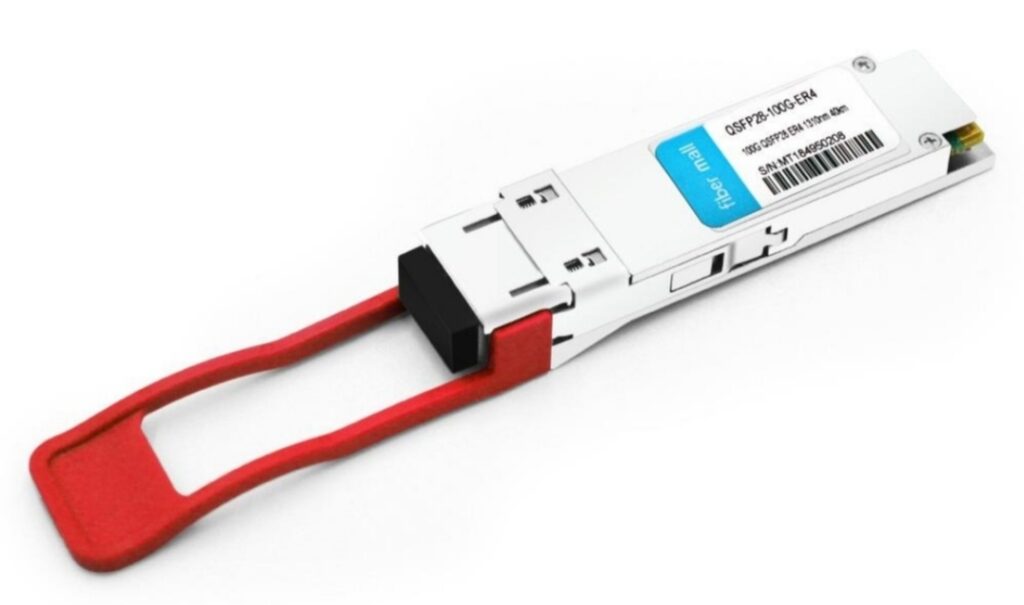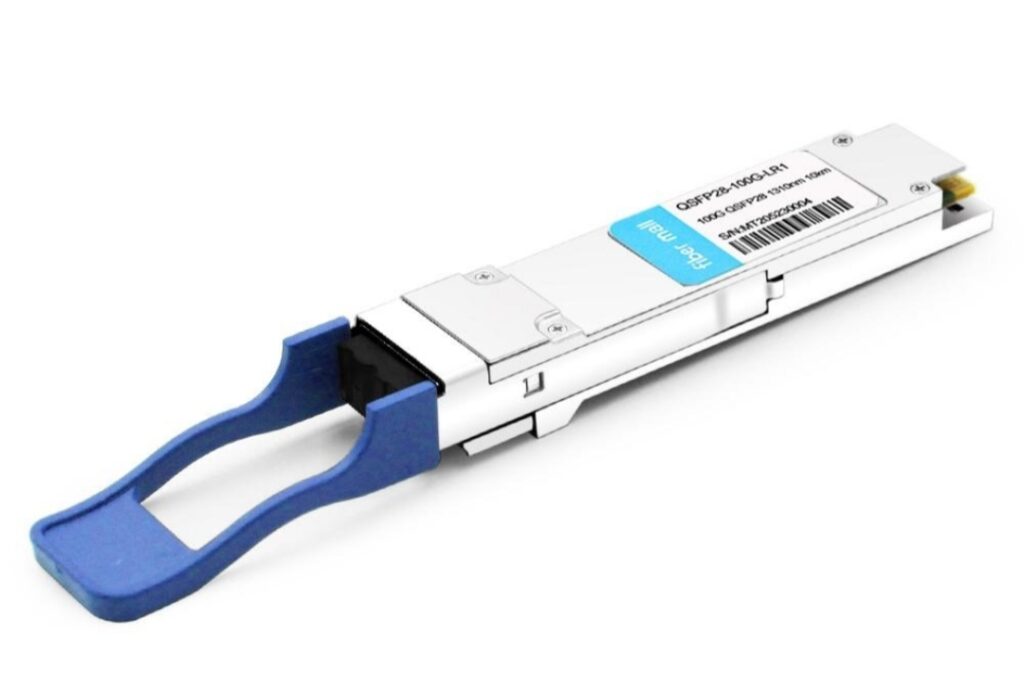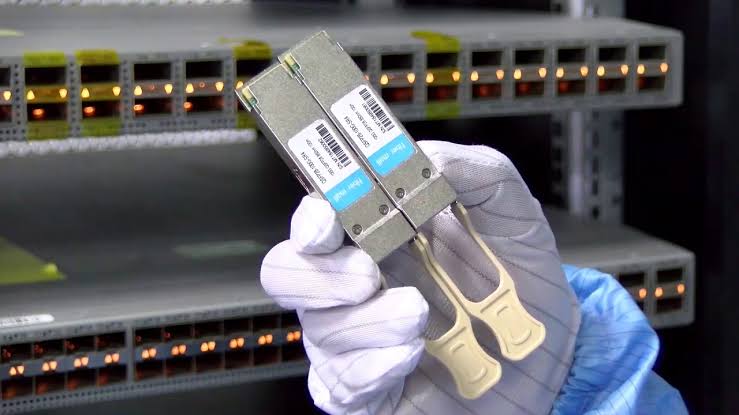100G QSFP28 Optical Transceiver: The Ultimate FAQ Guide
The 100G QSFP28 transceiver module is the universal data center form factor for 100G optical transmission. The QSFP28 transceiver generally has the exact same footprint and faceplate density as 40G QSFP+ . Just as the 40G QSFP+ is implemented using four 10Gbps lanes, the 100G QSFP28 optical transceiver is implemented with four 25Gbps lanes. With an upgrade electrical interface, QSFP28 transceiver is capable of supporting signal up to 28Gbps signals. Though QSFP28 transceiver keeps all of the physical dimensions of its predecessors, it surpasses them with the strong ability to increase density, decrease power consumption, and decrease price per bit. If you plan to develop optical communication business and want to better understand the 100G QSFP28, this guide will certainly help you.

1. What is 100G QSFP28?
The QSFP28 is a hot-pluggable transceiver module specifically designed for 100G data rates. The 100G QSFP28 integrates 4 transmit channels and 4 receive channels. The “28” designation indicates that each channel carries data rates up to 28G. The QSFP28 can perform 4x25G, 2x50G, or 1x100G connections depending on the transceiver used.
2. How much does 100G QSFP28 cost?
The 100G QSFP28 is a new generation optical module, which has the advantages of small size, high port density and low power consumption. 100G QSFP28 from different manufacturers has different prices based on many different factors, such as product costs, profits required by manufacturers and replacement frequency of the customers, which makes QSFP28 have different prices. There are many different models of this optical module, and the prices of each model vary greatly. For example, the QSFP 100G LR4 S module costs about $300, while the QSFP28 ZR4 costs $4000.

3. What’s the difference between 100G QSFP28 and SFP28?
SFP28 and QSFP28 transceivers actually adopt different sizes and working principles. SFP28 supports only one channel with 25 Gbit/s, while QSFP28 supports 4 separate lanes, and each is 25 Gbit/s. Both of them can be used in 100G networks, but the SFP28 is applied in the form of QSFP28 to the SFP28 breakout solution.
4. How to verify the quality of 100G QSFP28?

-Transmitter test
A variety of optical quality indicators such as eye pattern test, OMA (optical modulation amplitude) and extinction ratio are used to test the optical output of the transmitter. Test whether the input signal of the transmitter is good enough. At the same time, it is also necessary to confirm the quality of electrical measurement through jitter measurement and eye pattern test. Eye pattern test is a common method to check the output waveform of the transmitter, because eye pattern contains rich information and can reflect the overall performance of the transmitter.
-Receiver test
Different from the test method of the transmitter, when testing the receiver, the quality of the optical signal must be poor enough so to measure its optical signal reception sensitivity.
5. What Distance Can 100G QSFP28 Transceiver Support?
The multimode 100G QSFP28 modules are used for short distance applications, such as QSFP-100G-SR4-S transceiver. It can support the link lengths up to 70 m over OM3 MPO fiber patch cable and 100 m over OM4 MPO fiber jumpers. To support long distance signal transmission, single-mode transceivers are generally selected. With QSFP28 100GBASE-CWDM4 modules, you can build networks with link lengths up to 2km over single-mode duplex LC patch cords. 100GBASE LR4 can support links up to 10 km over single-mode LC fiber cable. And for super long transmission distances, the 100G QSFP28 ER4 and 100G QSFP28 ZR4 transceivers in the market can support the maximum network link lengths up to 30km and 80km respectively.
6. Is 100G QSFP28 compatible with 40G QSFP+?
The QSFP28 optical transceiver is similar in form factor and size to the QSFP+, and the QSFP28 optical module offers 25Gb/s per channel. 10Gb/s is available in each channel of the QSFP+ optics. As a result, the ports of the QSFP28 are backward compatible with QSFP+ optical modules. Besides, the QSFP28 has 4 electrical channels and can be used as 4x25G or 4x10G, while the QSFP only supports 40G (4x10G) data transmission.
7. Is 100G QSFP28 compatible with QSFP56 and QSFP-DD?
The QSFP56-DD (also called 400G QSFP-DD), is standardised by the QSFP-DD MSA Group. It has a similar size compared to the QSFP transceiver (QSFP+/QSFP28/QSFP56) but it has eight data lanes instead of four. The QSFP-DD port (the cage) is backward compatible with the QSFP transceiver and is compatible with a QSFP28 (if the switch supports it).
8. How many 100G QSFP28 transceivers can fit into one switch?
With 100G QSFP28 transceiver, a one rack-unit (RU) switch can accommodate up to 36 pieces QSFP28 ports. While many more varieties of transceivers and cables (DACs and AOCs) can plug into these ports.


